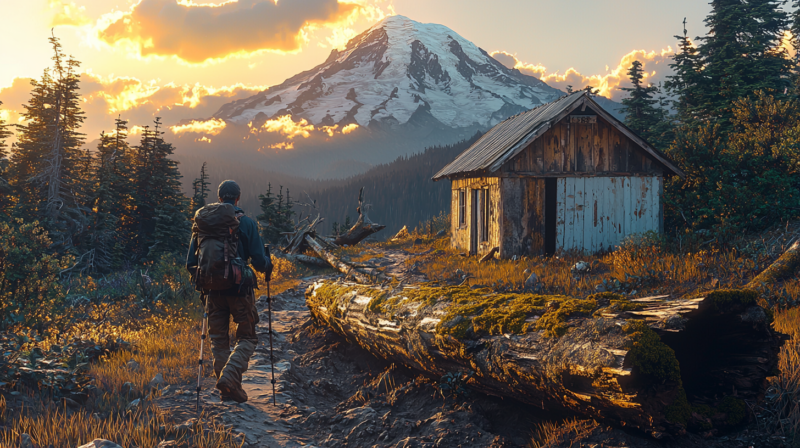
Winter camping offers a magical experience—snow-covered landscapes, crisp air, and starry skies. For families, it’s an opportunity to bond, explore, and embrace nature during a season many choose to stay indoors. However, winter camping comes with unique challenges, especially when kids are involved. With the right preparation and gear, you can make it a safe, fun, and memorable adventure for everyone.
This guide will walk you through the essentials for a successful family winter camping trip, from choosing the right gear to staying warm and entertained.
Why Winter Camping?
Camping in winter may seem intimidating at first, but it offers incredible benefits:
- Fewer Crowds: Campsites and trails are quieter, offering a more serene experience.
- Unique Beauty: Snow-draped landscapes and frost-covered trees create a magical setting.
- Quality Time: Fewer distractions mean more opportunities for family bonding.
- Teaches Resilience: It helps kids (and adults) learn to adapt and thrive in challenging environments.
1. Choose the Right Location
The first step in winter camping success is selecting a family-friendly campsite.
What to Look For
- Accessible Campsites: Choose a location that doesn’t require long, strenuous hikes to reach.
- Amenities: Look for sites with restrooms, water access, and flat terrain for pitching a tent.
- Safety: Avoid avalanche-prone areas or locations with extreme weather forecasts.
Great Options for Families
- State parks or national parks that offer year-round camping.
- Campgrounds with yurts or cabins as backup options.
- Sites near winter activities like sledding, snowshoeing, or beginner-friendly skiing.
Pro Tip: Research local weather conditions and pack accordingly. Aim for a site close to emergency services if you’re camping with young kids.
2. Essential Winter Camping Gear
Having the right gear can make or break your family winter camping experience. Here’s what you need:
Shelter
- Four-Season Tent: Designed for cold temperatures and snow, these tents provide insulation and withstand wind.
- Ground Insulation: Use a high-R-value sleeping pad to prevent heat loss to the ground.
- Tarp or Footprint: Place it under your tent to keep moisture from seeping in.
Pro Tip: Practice setting up your tent at home to ensure you can do it quickly in cold weather.
Sleeping Gear
- Cold-Weather Sleeping Bags: Choose bags rated for at least 10°F lower than the expected temperature.
- Sleeping Pads: Opt for foam or inflatable pads with a high R-value for maximum insulation.
- Extra Blankets: Bring wool or fleece blankets for added warmth.
Clothing
Layering is key for staying warm and dry.
- Base Layer: Moisture-wicking thermal tops and bottoms.
- Insulating Layer: Fleece or down jackets to trap body heat.
- Outer Layer: Waterproof, windproof jackets and pants.
- Accessories:
- Hats and gloves (bring spares in case they get wet).
- Wool socks (avoid cotton as it retains moisture).
- Gaiters to keep snow out of boots.
Pro Tip: Dress kids in one additional layer than you would wear to ensure they stay warm.
Cooking and Food Storage
- Stove: A liquid fuel stove performs better than canister stoves in freezing temperatures.
- Cookware: Insulated pots and mugs to keep food and drinks warm longer.
- Food Storage: Bear-proof containers or hanging systems to keep food safe from wildlife.
Pro Tip: Keep a thermos filled with hot water or tea for quick warmth during the day.
Safety and Emergency Gear
- Headlamps and Flashlights: Bring extra batteries (cold weather drains them quickly).
- First Aid Kit: Include supplies for frostbite, cuts, and blisters.
- Shovel: For clearing snow or creating wind barriers.
- Firestarter Kit: Waterproof matches, lighters, and fire starters.
- Navigation Tools: Map, compass, or GPS device.
- Emergency Blankets: Lightweight but incredibly effective for retaining heat.
3. Tips for Staying Warm
1. Keep Everyone Dry
Wet clothes or gear can lead to hypothermia. Ensure everyone changes out of wet clothes immediately and stores damp items away from sleeping areas.
2. Use the Hot Water Bottle Trick
Before bed, fill a water bottle with hot water and place it in your sleeping bag. It’ll keep your sleeping area warm through the night.
3. Eat High-Energy Foods
Calories are essential for maintaining body heat in cold weather. Include foods rich in healthy fats, proteins, and carbs.
4. Warm Up Before Bed
Do light exercises like jumping jacks or jogging in place to raise your body temperature before climbing into your sleeping bag.
4. Family-Friendly Winter Activities
Winter camping with kids isn’t just about surviving the cold—it’s about making memories. Plan activities that everyone can enjoy:
1. Snow Play
- Build snow forts, snowmen, or have a snowball fight.
- Go sledding or tubing if there are nearby hills.
2. Winter Hikes
- Choose short, scenic trails suitable for kids and pets.
- Use snowshoes to make walking in deep snow easier.
3. Stargazing
Winter skies are often clearer, making it a perfect time to teach kids about constellations.
4. Campfire Fun
- Roast marshmallows or make s’mores.
- Share stories or sing songs around the fire.
5. Mealtime in the Cold
Cooking in winter conditions requires some adjustments to keep everyone fed and happy.
Meal Ideas
- Hot Breakfasts: Oatmeal, pancakes, or breakfast burritos.
- Quick Lunches: Wraps, sandwiches, or soups in thermoses.
- Hearty Dinners: Chili, pasta, or stews packed with protein and carbs.
Pro Tip: Pre-chop ingredients at home to minimize prep time in the cold.
6. Safety Tips for Winter Camping
1. Know the Signs of Hypothermia and Frostbite
- Hypothermia: Symptoms include shivering, confusion, slurred speech, and exhaustion.
- Frostbite: Look for white, waxy skin and numbness, especially on fingers, toes, and ears.
2. Monitor Everyone Regularly
Check on kids and pets frequently to ensure they’re warm, hydrated, and comfortable.
3. Protect Against Wildlife
Even in winter, wildlife like bears and raccoons can pose a threat. Store food securely and avoid leaving scraps around the campsite.
7. Packing Up: Leave No Trace
Teach your kids the principles of Leave No Trace:
- Pack out all trash, including food scraps.
- Avoid damaging vegetation, even if it’s covered in snow.
- Leave the campsite better than you found it.
A Real-Life Example: A Family’s Winter Adventure
Imagine waking up in a cozy tent surrounded by snow-capped trees. Your kids peek outside, excited to explore. After a hearty breakfast of hot cocoa and pancakes, you bundle up and head out for a snowshoe hike. The day is filled with laughter, snowman-building contests, and sledding down a gentle hill. As the sun sets, you gather around a crackling fire, sharing stories and toasting marshmallows under a sky full of stars.
This could be your winter camping trip—with the right preparation and mindset.
Final Thoughts
Winter camping with your family may require more preparation and gear, but the rewards are well worth the effort. From the crisp air to the magical snow-covered scenery, it’s a chance to create lasting memories and teach your kids about resilience, teamwork, and the beauty of nature.
By following this guide and prioritizing warmth, safety, and fun, you’ll be ready to embrace the challenge of winter camping—and make it a tradition your family looks forward to every year.
Ready to start planning? Grab your gear, bundle up, and let the adventure begin!

